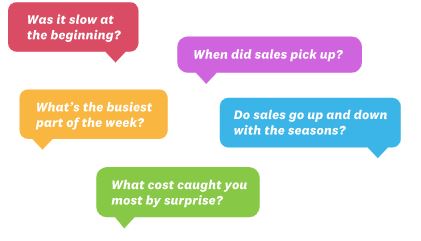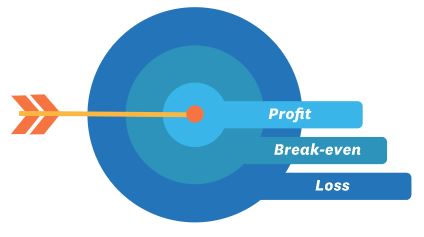
Forecasting sales can seem like guesswork. There are a lot of estimates, and those estimates are often based on assumptions. But you can approach it scientifically. Here’s how.
What is forecasting in business?
Forecasting goes hand-in-hand with budgeting to help you predict the financial outlook of your business. You start by estimating income (sales) and expenses over a period of time, such as six months. That’s your starting forecast and you use those numbers to draw up a budget.
As time goes by, you’ll see how the business is actually doing and adjust your forecast to be more realistic. If things are going well, your forecast will become more optimistic. If things start slowing down, your forecasts will become more conservative.
Your first forecast is probably going to be the hardest to do. While you can get quotes to help estimate costs, predicting sales is far trickier.
Sales forecasting methods and their flaws
The first thing you need to know about sales forecasts is that they’re never going to be 100% right. The idea is to make the margin of error as small as possible.
There are dozens of sales forecasting methods, but most of them are built for existing businesses. They require you to have information about past sales. New businesses don’t have that luxury. That leaves you with four options – and you should probably use at least two of them.
1. The ballpark method
Start by identifying the total target market and work your way backwards to see how many could become customers. Do this exercise for your first three months, your first six months, and your first year. We can help you out with this.

Categorise your most likely customers by age, profession, location and so on. How many people fit the description of your target market? Your marketing will only reach some of that group. And you can only expect to win a portion of those as customers. Whittle the numbers down as realistically as you can.
2. The borrowed-homework method
No matter what your business is, someone is likely to be doing something similar, somewhere. Find those people and ask them how sales have gone.
You don’t need to pry into their finances, or get exact numbers. Start with broad questions about their business. A lot of owners will open up and share their story.

3. The working-backwards method (setting a sales target)
You could start the forecasting process by seeing how many sales you need to sustain a viable business. This isn’t a sales forecast so much as a (minimum) sales figure.
Once you know the minimum your budget will allow, some market research can help you see if that’s a realistic sales target. You could start by asking other businesses that serve the same market. Or you could go direct to customers and ask about their buying habits.
If it seems feasible to hit the target, you might make (or buy) the corresponding amount of product and set out to sell it. This method is more likely to be used by someone who’s turning a hobby into a business. It allows them to start small, build slowly, and control costs.

4. The ask-an-expert method
You know who’s seen a lot of business ideas, budgets and forecasts? Accountants and bookkeepers. Investors, too. Speak to us. We love to hear about new business ideas.
Your first consultation is free so once we have established your needs we will give you a guaranteed fully inclusive price.
Do several sales forecasts when starting a business
You don’t know how well your new business will go, so explore a few options. Run a scenario with really soft sales, one with strong results, and another in the middle.
That’s how to start a business with confidence, because you’ll be prepared for all eventualities. If sales start slow, you’ll have a draft budget for that. If business booms, you’ve already done some thinking about how to meet the demand. Working through the scenarios will teach you a lot. Have fun with them.
For further information on sales forecasting and using Xero, please contact us on 01904 655202 or email enquiries@hghyork.co.uk.
Source: Xero
This article is for information purposes only and is not intended to be a substitute for professional advice







